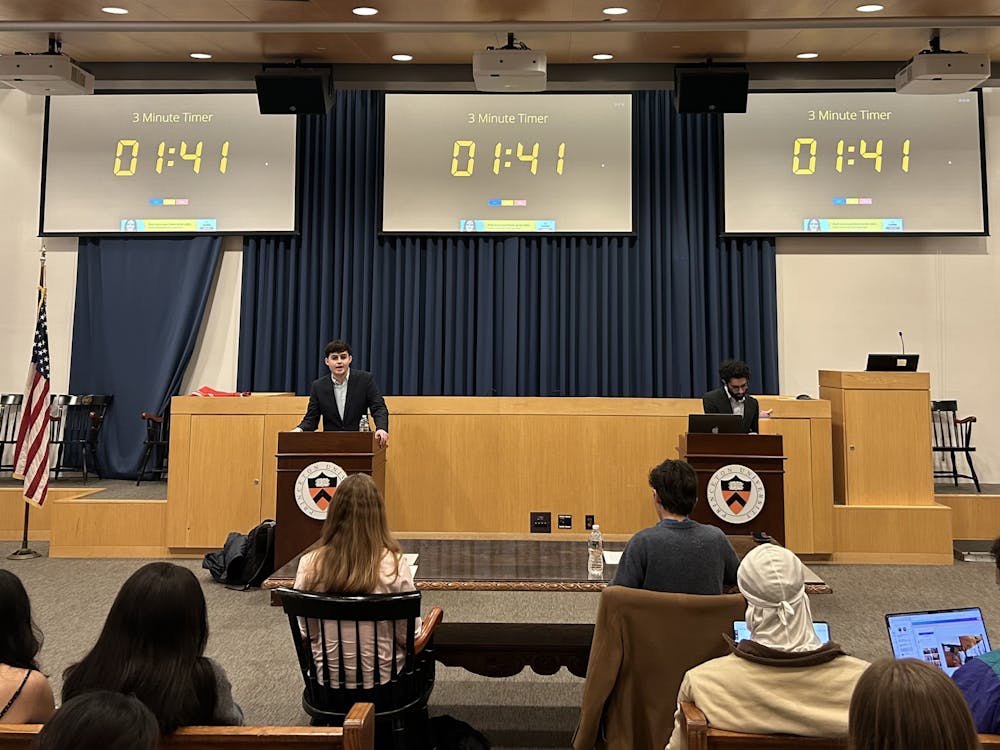Imagine this. One night Dean Malkiel is sitting in her office trying to think of a solution to grade inflation. All of a sudden a small spaceship flies through the window and deposits two green Martians on her ottoman. Speaking in a monotone but fairly fluent English, the aliens ask what she is working on so intensely at such a late hour. The Dean, unflappable as always, calmly explains to the Martians how GPAs are spiraling out of control, calling into question the educational integrity of her beloved Princeton. Reflecting on this for a moment, the Martians ask: "But what is the purpose of grading?" Dean Malkiel ponders this question as she takes the space-travelers to her leader, and by the time she reaches President Tilghman's office has begun to think about the issue in a whole new way.
The Martians' perceptive question cuts through the current hoopla over grade inflation to the core issue: why do we care about grades in the first place? While those of us close to the problem may lose sight of this, the Martians, seeing the issue freshly, prove quite insightful.
In response to their query, I have heard two explanations of what grades mean. The first is that they are a kind of absolute measure of academic quality. Students and professors alike are familiar with the rubrics that read, "An 'A' paper will . . . a 'B' paper will . . ." and so on. Graders try to use these criteria as a kind of standardized ruler against which to measure students' performance. In theory, grade inflation should not be a problem under such a system. If the criteria are applied objectively, clustering around a certain range of scores simply means the students are of similar ability.
The second explanation is that grades are relative measures of quality. What matters is how a student performs compared to his or her classmates, the location on the bell curve. If this were the dominant philosophy, grade inflation would simply not exist; the average GPA would always be a nice round "C."
The difficulty is that no one has definitively declared which explanation we are using or supposed to be using. Worse, different professors operate under different understandings and most probably employ some combination of absolute and relative measures. This problem is further exacerbated when compared across departments, fields and institutions, and made essentially unsolvable when entirely different educational systems are considered. So it is hard to know what any one student's grades actually mean. Did he take easy or hard courses? Were her professors generous or draconian? Were his classmates geniuses or — as my high school gym teacher would put it — mental midgets?
In some ways, it is odd that colleges are so flustered by the inflation of grades. They have, after all, developed a complicated system for sorting through the hordes of high school students who throw beefed-up GPAs their way each year. To quote the standard admissions office line, colleges consider a wide range of indicators to gain a balanced perception of an individual. Princeton could easily fill its freshman class with straight 4.0s, but it knows, for all the reasons described above, that grades can only offer a very limited amount of information, even about purely academic matters.
Perhaps it would be productive to remember some of that in the conversation on grade inflation. Professors should be trained (and then trusted) to use the right amount of relative and absolute measurement, and students — as wells as graduate schools, medical schools and law schools — should remember how little the first, second, third, fourth, and sixth letters of the alphabet can tell us. As we all know but tend to forget, learning and teaching is a vastly more complicated and exciting experience than any kind of yardstick can convey.
Unfortunately, the type "A" personalities (etymological coincidence? I think not) who populate this and other campuses are unlikely to loosen their white-knuckle grip on grades anytime in the near future. Despite the fact that everyone would be better served by a general dose of perspective, no student and no university is willing to unilaterally disarm — a prisoner's dilemma writ large. However, some institutions of undeniable academic quality (St. Anne's School in New York and Yale Law School, for example) have explored alternatives to the A, B, C, D, F system, and do not seem to have suffered as a result. Perhaps there are lessons to be learned there.

In the meantime, listen to the Martians. Is this really an issue to stay up late at night worrying about? Taking a step back from the grade inflation controversy reminds us that the real reason we are here has less to do with what appears on our transcript and much more to do with a word beginning with that neglected fifth letter of the alphabet — Education.
Tom Hale is a Wilson School major from South Kingston, R.I.








